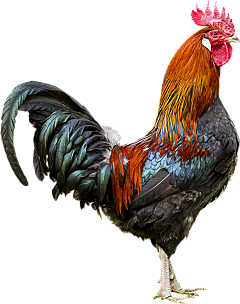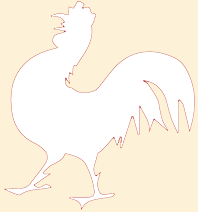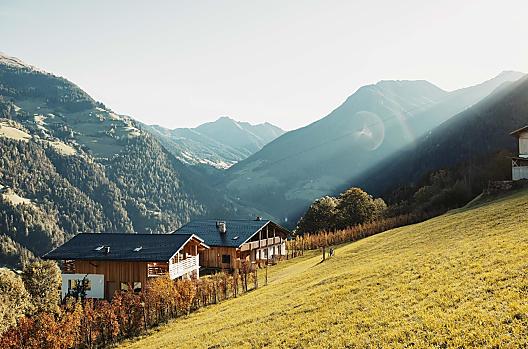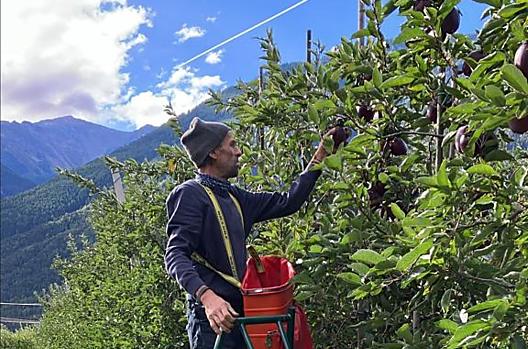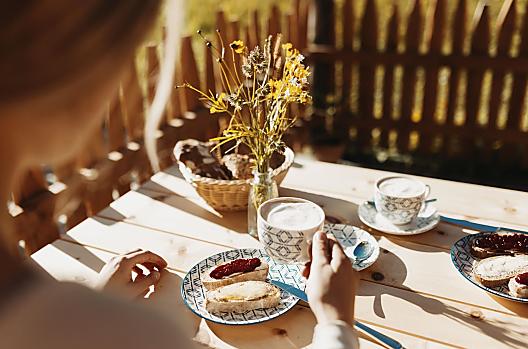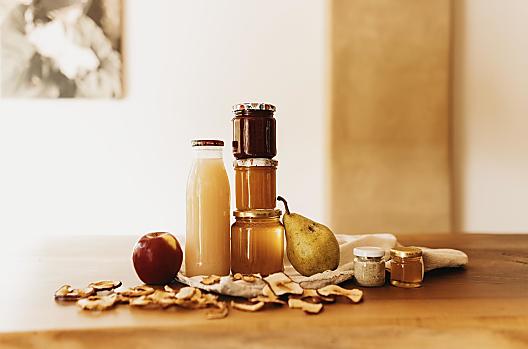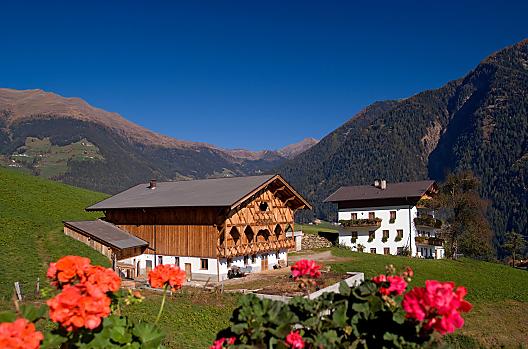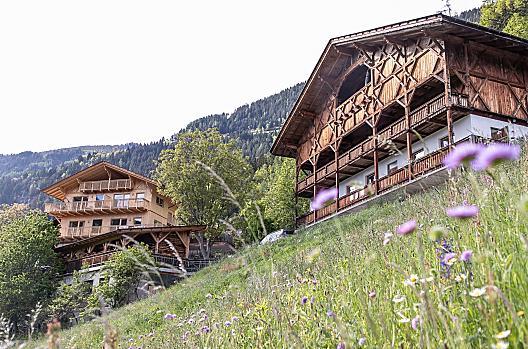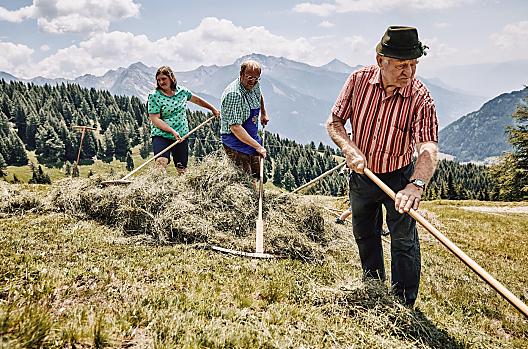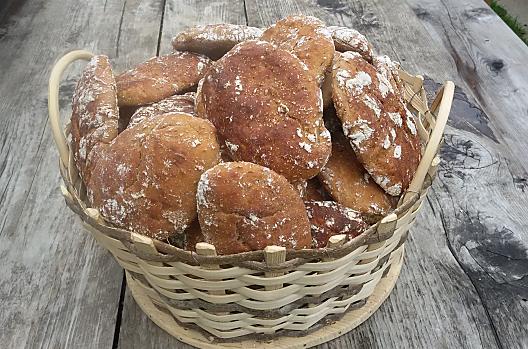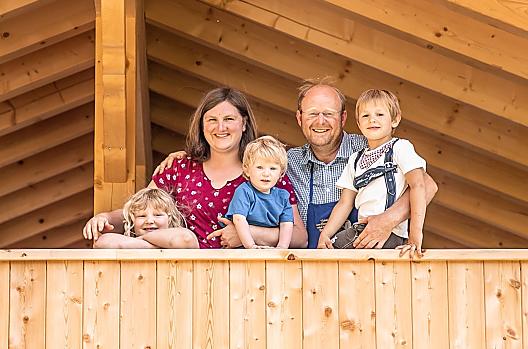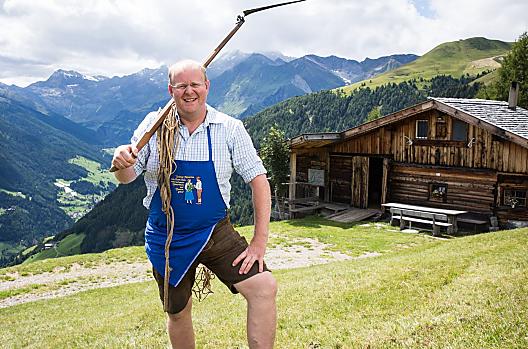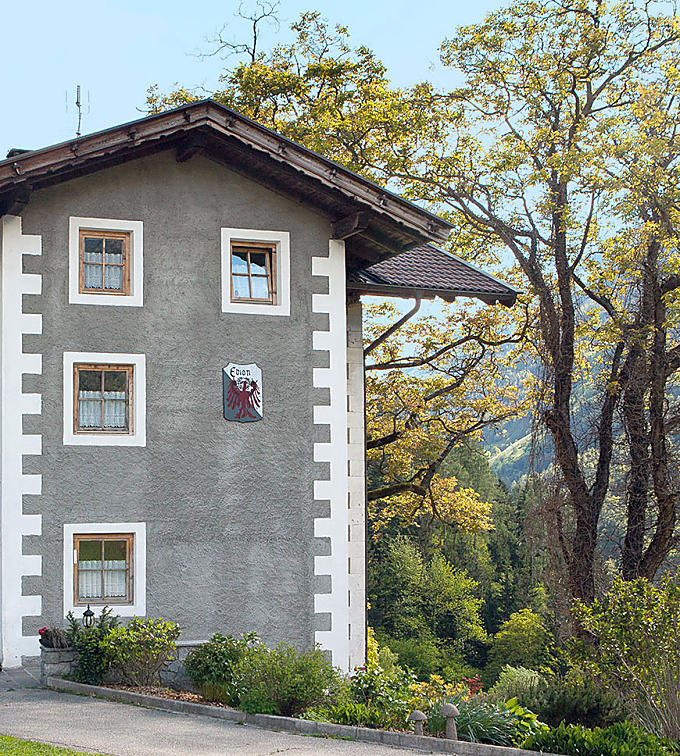
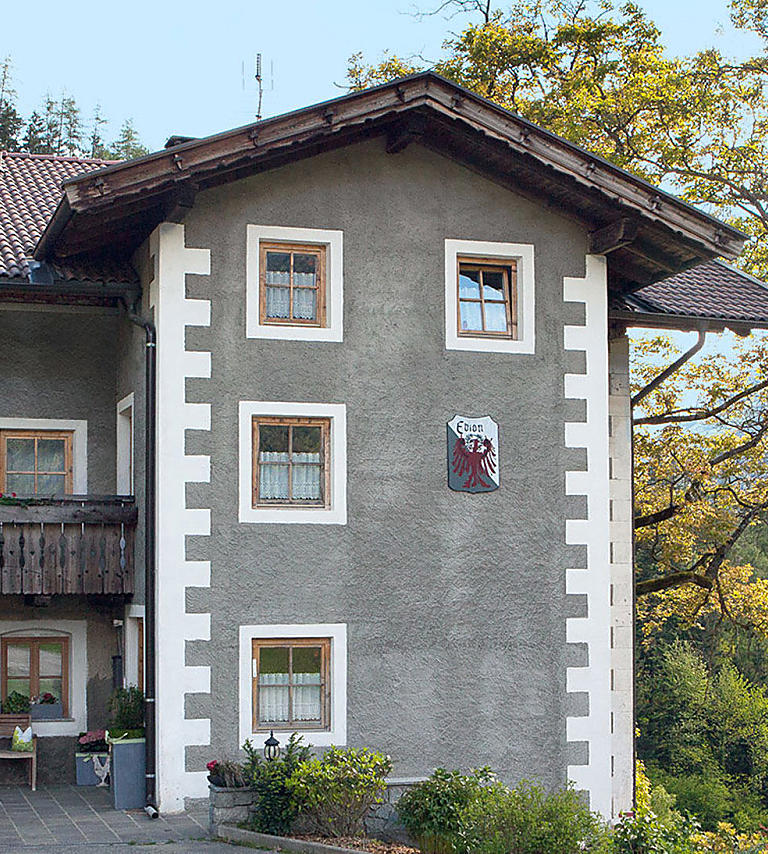
Day trip destination
Schildhöfe Passeiertal valley: born of nobility and privilege
The eleven Schildhöfe farms in Passeiertal valley bear witness to a noble past. These fortress-like constructions may be found on the Passeirer Schildöfeweg.
The typical farmsteads of the Passeiertal valley are usually rather squat wooden constructions. Yet eleven farmsteads in the Vorderpasseiertal valley hardly meet this description: they stand out thanks to their imposing and fortress-like appearance. Their outer walls are partly decorated with frescoes and stone towers more reminiscent of a stately home than a farmhouse rise up next to them. These are the Schildhöfe, which go back to the 13th century.
A glimpse of the past
The striking construction features of the Schildhöfe farmsteads bear witness to the special status of their rural owners. Back in the 13th century, these owners were said to have served as squires of Count Albert of Tyrol. In 1317, the eleven farmers were made exempt from tax in a charter by Count Heinrich of Tyrol. In return for this privilege, they pledged to serve their Prince Regnant within Tyrol. The squires were considered minor aristocracy and so were allowed to bear arms. In times of peace, the Schildhöfe provided their master with food and were at his side during times of war. On festive occasions, the Schildhof farmers formed the sentry at Schloss Tirol or the castle of Zenoburg.

The eleven Schildhöfe in Passeiertal valley
Since the charter by Duke Leopold in 1396, the farmers of the Schildhöfe were subject to the laws of the aristocratic court and received the hunting and fishing rights to their land. These fishing rights in the Passer river are still valid today. On festive occasions such as processions, the farmers from the Schildhöfe in Passeiertal valley are often seen with a shield bearing the name of the farm as well as a helbard.
There are seven Schildhöfe farmsteads around St. Martin in Passeier: Gereuth, Baumkirch, Kalm, Granstein, Haupold, Saltaus and Steinhaus. The four Schildhöfe around St. Leonhard in Passeier are Happerg, Ebion, Buchenegg and Gomion. The final one is especially interesting from an architectural point of view with its entrance door featuring an ogive and coat of arms in stone.
The Passeier Schildhöfeweg path
There is an easy walk taking around two and a half hours through meadows and woodland and past pretty picnic spots with all-round views leading to the Schildhöfe in Passeier. It starts in Saltaus, right by Saltauserhof 'Schildhof', where interesting anecdotes and information on the Schildhöfe in Passeier are available. It goes on to Haupold Schildhof and through woodland to Granstein. Display boards give insight into a number of topics along the way, including the 'Passeier Court'. The way back to the start in Saltaus leads via the Passerdammweg path.
Schildhöfe farms
Further information
- in St. Martin/S. Martino: Haupold, Saltaus, Granstein, Kalm, Baumkirch, Gereuth, Steinhaus
- in St. Leonhard/S. Leonardo: Ebion, Buchenegg, Happerg, Gomion
In Vorderpasseiertal Valley there are some unique buildings: farmhouses built mostly of wood, or a castle-like building overgrown with ivy and decorated with ancient sundials or frescoes. The history of the Schildhof farmers dates back to the 13th century, when they served Count Albert of Tyrol (1190-1253) as shield-bearers. As a result, the large farms were granted many privileges. What remains now are only fishing rights in the Passer river.
Tip: Passeirer Schildhöfeweg trail
From Meran/Merano to the Passeiertal Valley in direction of Timmelsjoch Mountain Pass/Jaufenpass Mountain Pass.
The starting point is easy to reach with the following public connections: With bus line 240 from Meran/Merano to St. Leonhard/S.Leonardo.

